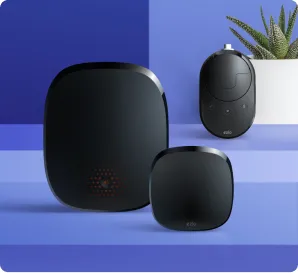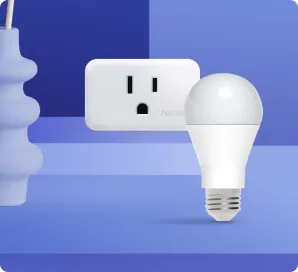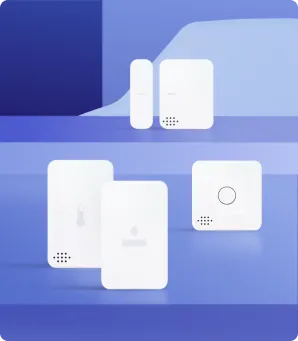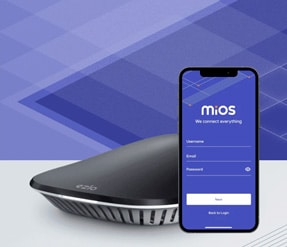Understanding Z-Wave Devices and Why they are Important
Z-wave devices are wireless components that facilitate connectivity within a home. As smart homes become more popular, home designers and owners are adding more connected gadgets to their houses. Many of these gadgets, such as lightbulbs, sensors, heating controls, plugs, and locks, rely on Z-wave to communicate with one another.
Number of Z-Wave Devices Available Across the Globe
Today, there are over 100 million Z-wave devices spread in intelligent homes worldwide. Homeowners can choose from more than 3,500 Z-wave enables gadgets. Z-wave gadgets are considered more energy efficient than Wi-Fi, even though they have a broader range than Bluetooth. Z-wave relies on low-power radio waves to communicate among devices.
How does Z-Wave Function?
Z-wave devices function under the 800-900MHz radio frequency range. However, unlike other protocols that operate under 2.45GHz, Z-wave hardly experiences any significant issues.
The frequency that a Z-wave gadget operates under depends on the country where it is being used. For instance, Europe and the UK utilize 869.85, 868.42, and 868.40, while the US uses 916, 908.42, and 908.40MHz.
Always ensure the Z-wave device you choose is configured for your country. Z-wave gadgets are designed to connect to create a mesh network. The core smart home hub you use to control your Z-wave devices connects directly to the hub. However, not every Z-wave gadget can replicate a signal.
Some can dispatch their waves, explaining why Z-wave repeaters are common always-activated mains-oriented gadgets like the smart plug, which can transmit and receive waves from a node and back to the hub.
What’s Mesh Network in Z-Wave Devices?
A Mesh network is a system where all nodes are connected non-hierarchically and directly to numerous nodes. The nodes then collaborate to transmit data to and from different clients. Each gadget in a Z-wave grid represents a node. Every device is linked to all other units within its range. Such a set-up comes with two core benefits:
Range
Z-wave devices come with a 30m range, with some recent versions having a more extensive coverage. However, the entire network’s capacity is often more expansive. Z-wave comprises data moving from one node to the other numerous times. That facilitates communication between two gadgets from different ranges.
Connection Via a Gateway is not Necessary
Each gadget in a Wi-Fi grid must first link to a standard router to access the network. On the contrary, new devices in a Z-wave network connect to other gadgets and instantly access the network.
These features make Z-wave one of the unique communication protocols. They also make them ideal for sensor and control applications.
Why are Z-Wave Devices Important?
Here are some of the reasons why you may choose a Z-wave gadget.
- Easy to Install
Configuring electronic gadgets can be a difficult task that requires professional input, raising costs. To eliminate this challenge, Z-wave introduced SmartStart to ease and accelerate installation.
This feature allows manufacturers to execute every gadget configuration before distributing it to end-users. That way, every device is pre-configured and matched with the network. Installing a new gadget involves powering the Z-wave device.
Your network’s portal then recognizes the portal and facilitates connection. If the gadget you are installing is not pre-configured, you can still install it by scanning its QR code to inform your portal that you are incorporating a new device.
- Interoperability
Interoperability was incorporated in Z-wave guidelines from inception. That means that Z-wave units are compatible with one another regardless of the version, manufacturer, and brand. While this feature appears simple, they are critical to the wide range of products available for smart homes.
Interoperability also eradicates compatibility challenges when connecting multiple gadgets. Further, this principle ensures that every authorized Z-wave device can efficiently work with one another.
- Scalability
Z-wave is an easy-to-scale mesh network. Many Z-wave gadgets come with an approximately 30 meters range, sufficient for many homes. Homeowners with more needs can extend the network range accordingly.
Z-wave products play the role of a repeater, meaning that a message can be relayed indirectly to a gadget away from the transmitter’s sphere. If you are using battery-powered devices, remember they are optimized for low energy consumption, meaning they will not play the role of a repeater. Doing so reduces battery life.
- Less Power Consumption
Many smart home gadgets are battery-powered, while others can be plugged into the action. Such gadgets are usually auxiliary gadgets or sensors that hardly operate continuously. The core importance of intelligent gadgets is convenience. However, changing batteries weekly can be inconvenient, explaining the significance of minimal power consumption. Z-wave chips are designed for battery-powered gadgets to reduce power consumption while prolonging battery life.
Finally
Z-wave products will transform your intelligent home configuration process. They connect directly, creating a robust mesh network. Having a reliable and excellent quality smart home grid is critical. A proper intelligent network must be solid and capable of running smoothly to facilitate seamless communication with connected gadgets.


















